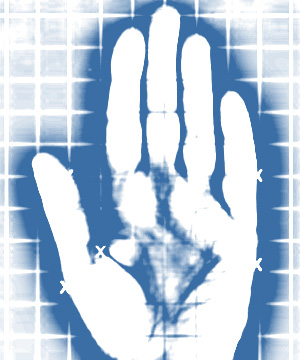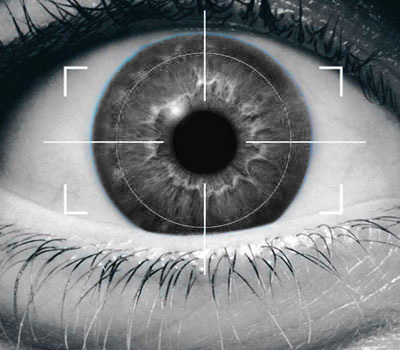

Biometrics comprises methods for uniquely recognizing humans based upon one or more intrinsic
physical or behavioral traits. In computer science, in particular, biometrics is used as a form
of identity access management and access control. It is also used to identify individuals in
groups that are under surveillance.


A fingerprint is made of a a number of ridges and valleys on the surface of the finger. Ridges
are the upper skin layer segments of the finger and valleys are the lower segments. The ridges
form so-called minutia points: ridge endings (where a ridge end) and ridge bifurcations (where
a ridge splits in two). Many types of minutiae exist, including dots (very small ridges),
islands (ridges slightly longer than dots, occupying a middle space between two temporarily
divergent ridges), ponds or lakes (empty spaces between two temporarily divergent ridges), spurs
(a notch protruding from a ridge), bridges (small ridges joining two longer adjacent ridges),
and crossovers (two ridges which cross each other).
The uniqueness of a fingerprint can be determined by the pattern of ridges and furrows as well
as the minutiae points. There are five basic fingerprint patterns: arch, tented arch, left
loop, right loop and whorl. Loops make up 60% of all fingerprints, whorls account for 30%, and
arches for 10%.

The iris is the elastic, pigmented, connective tissue that controls the pupil. The iris is formed
in early life in a process called morphogenesis. Once fully formed, the texture is stable throughout
life. It is the only internal human organ visible from the outside and is protected by the cornea.
The iris of the eye has a unique pattern, from eye to eye and person to person.
This Website was created by Kevin
March 17, 2010